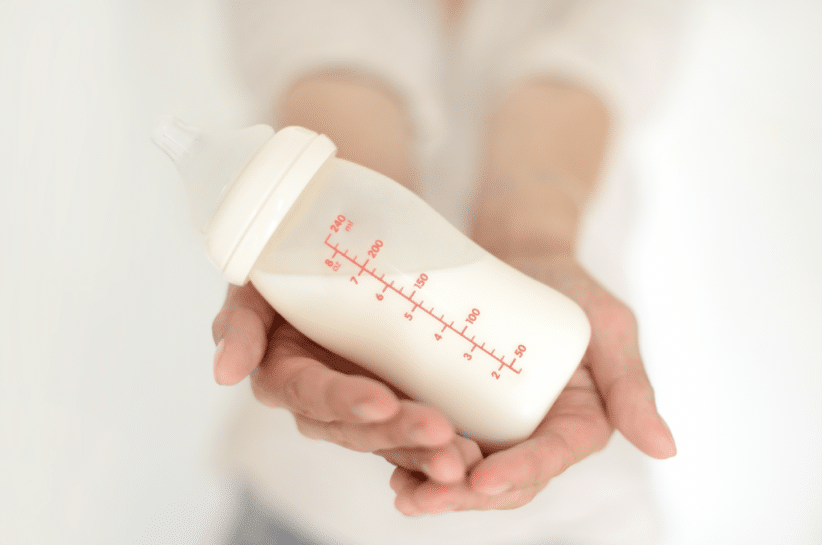Picnics at the park, sandcastles on the beach and Marco Polo in the pool. Sure, it’s summertime and “the livin’ is easy.” But we bet Gershwin never had to navigate changing SPF guidelines or confusing sunscreen ingredients, let alone attempt to slather lotion on a wiggling 5-year-old. We chatted with some NYC dermatologists to get the skinny on summer in the sun. The result? Sun care that’s as simple as 1, 2, 3.
1 SHOT GLASS. Not to mix afternoon cocktails, but to use as a measurement when applying sunscreen. When they do tests on sunscreens in the laboratories, “one application is equal to a full shot glass of lotion,” says Dr. Jody Alpert Levine, director of dermatology at Plastic Surgery & Dermatology of NYC, PLLC, which serves families in Manhattan. “People just don’t use enough.”
2 HOURS. When outside, reapply every two hours or after swimming. “One of the main things people don’t do is reapply,” says Dr. Debra Jaliman, a board-certified dermatologist with a private practice on the Upper East Side and an assistant clinical professor at Mount Sinai School of Medicine. She adds that it’s important to reapply after swimming even if your sunscreen is waterproof. “When you towel yourself off after swimming, you are rubbing off your sunscreen,” Dr. Jaliman says.
3 STEPS TO TAKE AFTER GETTING A SUNBURN. First, take an anti-inflammatory like aspirin or ibuprofen. “With a burn, the blood vessels are damaged and this helps decrease the inflammation,” says Dr. Jaliman. Second, use a cold compress to soothe the area. Soak a towel or washcloth in a mixture of part skim milk and part cold water, and leave it on the area for about 15 minutes twice a day. Finally, use a mild over-thecounter cortisone cream to ease the pain.
Dr. Levine recommends creams or lotions with aloe or green tea serum that also may aid in healing the affected area. Remember, if any sort of blistering occurs, you have second-degree burn. Don’t try to treat that yourself; see a doctor to be sure it gets proper attention and doesn’t get infected.
4 (OR FORE!). Often the last person in the family to use sunscreen, Dad may be exposing a bit more skin on top than he is used to, and it’s important to protect that balding head. Dr. Jaliman suggests using a powdered sunscreen, which is translucent, water-resistant and non-oily—great for anyone working up a sweat on the golf course or tennis court.
5 FINGERS ON YOUR HANDS. Dr. Levine says the back of your hands is one of the main areas we miss when applying sunscreen, and recommends using a stick sunscreen, which doesn’t come off as easily. It’s especially great for kids, who often use the back of their hands to rub their eyes and face.
6 OTHER PLACES WE MISS MOST WHEN APPLY- ING SUNSCREEN: Lips, ankles, tips of ears, around the eyes, eyelids and the part in your hair. “These are all places where I see some of the worst sunburns,” says Dr. Jaliman. In addition to using sunscreen, she suggests wearing a wide-brimmed hat with a high SPF and sunglasses (see “For Your Eyes Only” for more info on shades).
7 DAYS A WEEK. Dr. Levine says that sunscreen should be part of your daily routine. “Wash your face, brush your teeth, put on your moisturizer, apply your sunscreen,” she says. Even in the wintertime and even if you aren’t going outside, UVA rays—the kind that lead to skin cancer—are
everywhere. Though you may not get burned, those rays come through
windows in offices, cars and your home and can cause serious skin
damage.
8—OR RATHER, WHAT YOU “ATE.”
Did you know what you had for a snack may help boost your body’s
natural defenses against sun damage? “The sun causes oxidation to occur
to the skin and the tissue,” says Dr. Levine. So, as the name implies,
antioxidants help fight the oxidation. She tells her patients to eat
colorful fruits and veggies—all kinds of berries, grapes, orange and red
peppers—and encourages them to drink green tea or pomegranate juice,
both rich in antioxidants, to help protect skin against sun damage.
9 MONTHS. Not
talking about the stork, but skin damage. “Hard to believe, but even
though the pain and redness of a sunburn may subside after a few days,
the damage to the blood vessels lasts about nine months,” says Dr.
Jaliman.
12 MONTHS.
Everybody should have a mole checked once a year by a dermatologist; if
you have a family history of skin cancer or very fair skin, you may
need it twice a year. If a mole is bleeding or itchy, if the borders
change and become irregular, or if the color of the mole changes, you
need to get checked—all are warning signs that should not be ignored.
“When in doubt, get it checked,” Dr. Jaliman says. If your child has a
large mole or birthmark, she suggests keeping your own annual photo
documentation of it, just in case you change doctors.
20 MINUTES.
How long it takes for most sunscreens to start to work. “Be sure to
apply chemical sunscreens (the kind often found in stores) 20-30 minutes
before going outside…not while you are already at the beach or the
park,” advises Dr. Levine.
30/45/60
This year, the minimum SPF was raised to 30 from 15. Dr. Levine
explains using a sunscreen with a SPF 30 means “you are able to stay out
in the sun 30 times longer than you would without sunscreen before
getting burned,” if, of course, you use the proper amount of
sunscreen. The bottom line? “The higher, the better,” Dr. Levine says,
“I don’t use anything less than 45.” Dr. Jaliman agrees: “When heading
to the beach, I tell my patients to wear a waterproof sunscreen with an
SPF of at least 60.”
100 Is
it ultimate protection? Lotions with an SPF of 100 have hit the
shelves, but don’t be fooled. “An SPF of 100 doesn’t mean you are
blocking 100 percent of harmful rays,” Dr. Jaliman says. “Nothing is 100
percent protection.”
FOR YOUR EYES ONLY
We
think of sunglasses and we automatically think fashion accessory (also
daily disguise for lack of sleep and not enough coffee). But Dr. Eliot
Grossman, O.D., vice-president of eyeCare at LensCrafters, points out
they should be thought of first as sun protection, especially for
kiddos. “Eighty percent of all UV damage in our eyes occurs before the
age of 18,” he says. “Sunglasses are the best and basically only way to
shield eyes against UV rays.” Here are five tips to keep your kids’ eyes
protected all year round.
1. “Kids will wear glasses they like and that are comfortable,” he says. The
fit is key, so be sure to pick shades that don’t fall off or press on
their ears. “Get ones that can be adjusted to fit your child.”
2. “Get polycarbonate lenses for kids,” Dr. Grossman suggests. Not only are they lightweight, they are shatterproof— safe from the sun and safe if they break or fall off.
3. If you or your kids are active outside, get polarized lenses. Whether
it’s boating, golfing, skiing or biking, no matter if it’s summer or
winter—these types of lenses are essential, reducing glare and enhancing
contrast.
4. Caps or wide-brimmed hats are okay, but they don’t do the whole job. “Hats are a great addition, but no substitute for glasses,” Dr. Grossman says.
5. Everyone in the family should be getting eye exams every year, especially once a child is in school. “An exam is as much about the health of your eyes as it is about checking if you need a prescription for glasses,” he says.
What about those $5 pairs (complete with a princess or dinosaur motif)? “As
long as they shield 99 percent of UVA/ UVB rays,” Dr. Grossman says.
“If it doesn’t say it on the tag or sticker, then they probably aren’t.”
One way to be sure is to get the glasses tested. Every LensCrafters
store has a machine that tests the amount of UVA/UVB rays a pair of
glasses blocks. The kicker: the testing is free. “Just walk in and we’ll
test them for you.” —H.C.
Our Favorite Summer Sun Care Essentials
Episencial’s Fun Summer Skincare Value Kit. Episencial, an organic skin
care line made with fruit extracts and other natural ingredients, has a
great sunscreen kit for kids—it includes a vitaminboosting sunscreen,
protective face balm and a soothing cream, plus an art projected
inspired by the beloved book “The Very Hungry Caterpillar.” $19.95.
Bobbi Brown’s Treatment Lip Shine SPF 15. Protect your lips and put on a
swipe of shine with these new moisturizing lipsticks. Cocoa and Shea
butters, Jojoba, Apricot Kernel and Avocado oils keep lips moisturized;
Peptides, Vitamin C and Paracress stimulate collagen production; and SPF
15 helps prevent sun damage. $22.
Philosophy’s Hope Oil Free Moisturizer SPF 30. Don’t let this daily
moisturizer’s lightweight formula fool you—it also provides
broad-spectrum sun protection, helps skin maintain its natural moisture,
and protects against environmental damage and aging. $45.
So Cozy’s Protective Conditioning Mist with Sunscreen. Protect your
child’s scalp and delicate hair from sun damage with this yummy,
coconut-smelling conditioning spray. The paraben-free leave-in
conditioner works on both wet and dry hair and also prevents flyaways
and frizz. $6.
L’Oreal Paris EverPure UV Protect Spray. Keep your locks looking
lustrous with this lightweight, non-sticky spray with UV filters.
Infused with rosemary and mint, the spray leaves color-treated hair
healthy, shiny and protected from fading. $8.99.
Essie’s Non-Yellowing Top Coat. Protect your nail and preserve your new
manicure with Essie’s Non-Yellowing Top Coat. It protects polish from
harmful natural UVA and UVB rays and keeps color from fading in the
summer sun. $8.





















